Final Assignment
Excerpt:
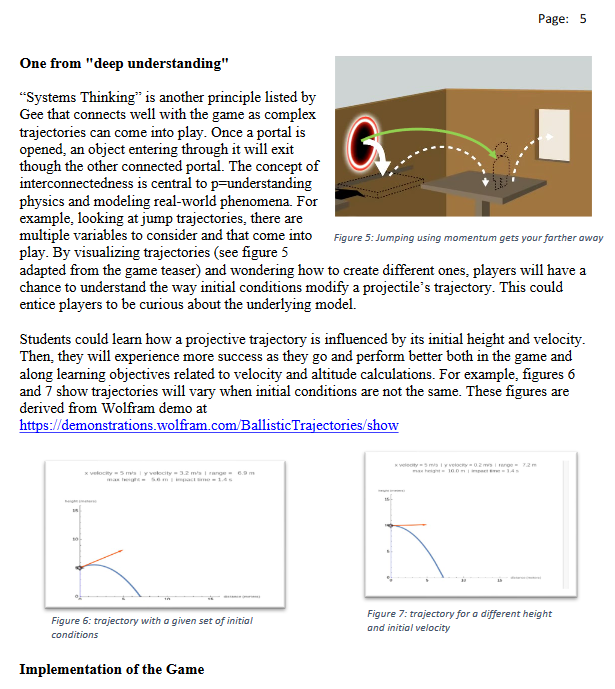
VIEW PDF File: assignment-level5-vfinal-edited2
Draft of the template design I prepared for my students.
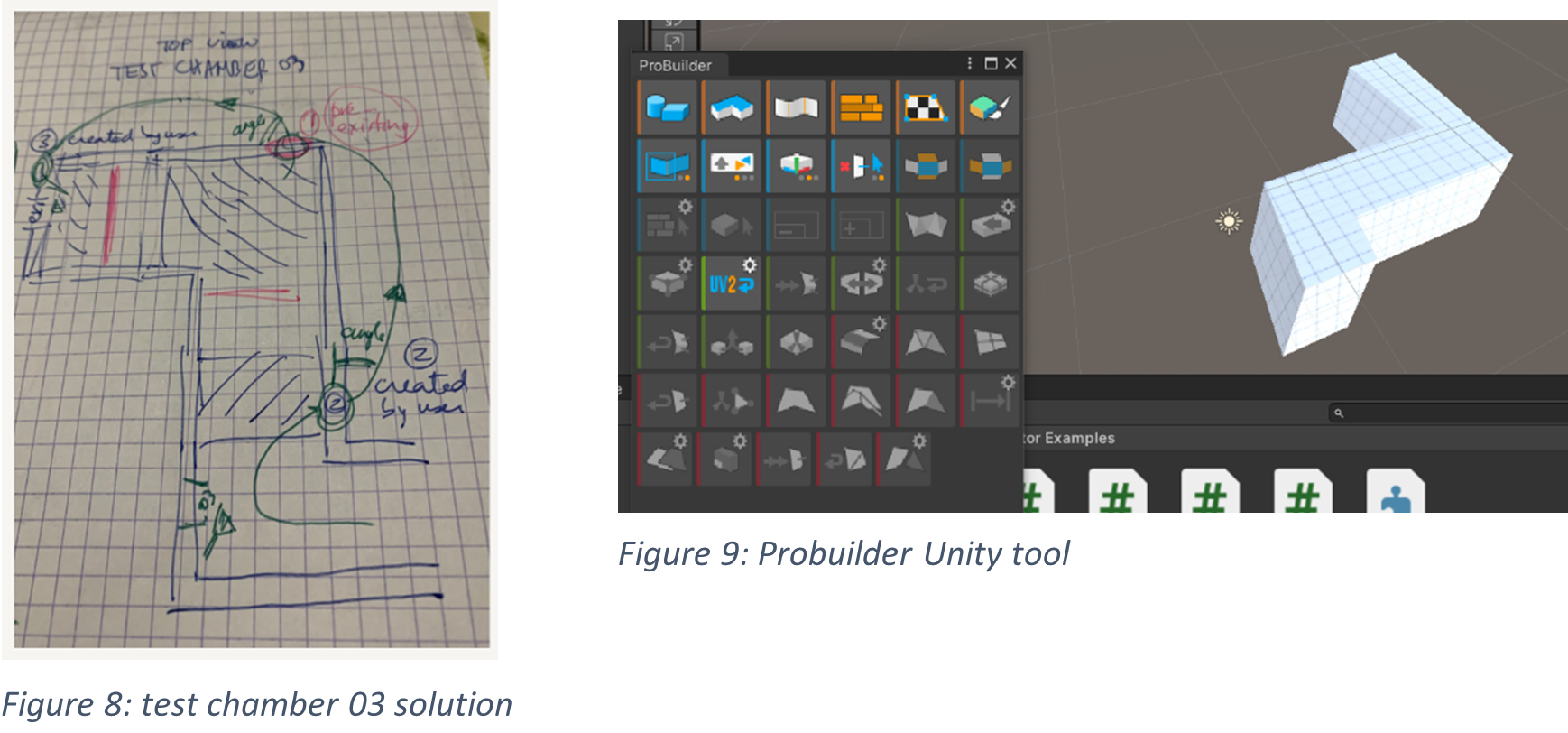
Excerpt:

VIEW PDF File: assignment-level5-vfinal-edited2
Draft of the template design I prepared for my students.

Fashion a Rainbow by kahina morisset on Prezi Next
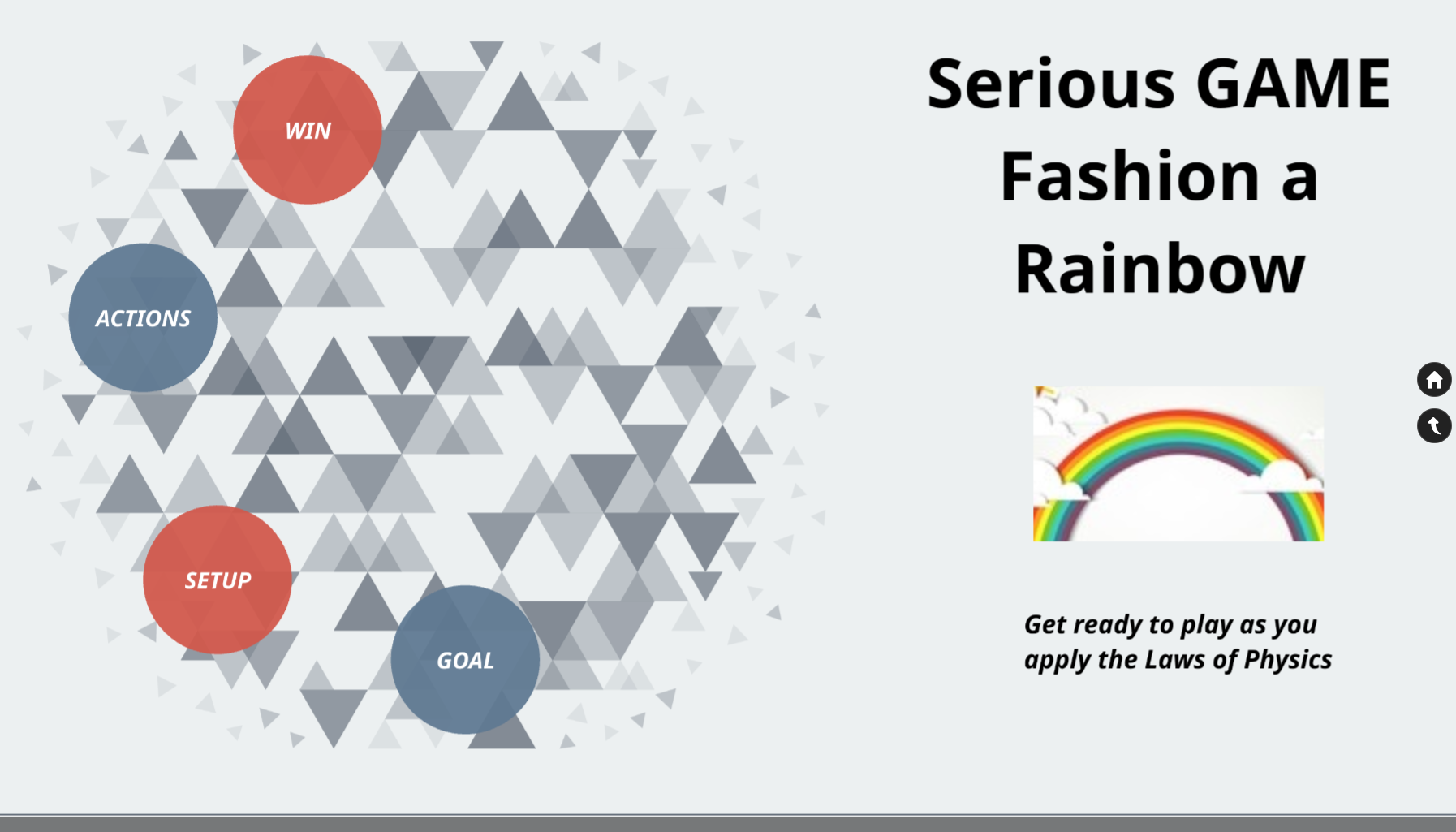
Feedback
============
Cooperation is helpful though I don’t know that it is relating to the champion recognition (that would be competition). Rather cooperation would instill a better group sense of building the rainbow over the game. The added element of competition does go against the spirit of cooperative work but works better than a collaborative approach (collaboration with competition can be done but it is much harder to parse out (and players don’t always make that distinction easily), particularly when issues arise of whether to contribute (i.e. placing a card that a player doesn’t know how to use for other players to use) or not because your contribution will help someone else get ahead but you need to help the group move ahead).
Time is a good element in general as it does keep a game moving along (the missing Time element from Monopoly and Risk for example are why so many people get frustrated or don’t play — another good example of a game with time is Chess – True Chess games utilize a timer for similar reasons, to keep the game moving forward and to instill quick thinking). I don’t know that time, however, encourages the contribution of all, I believe that is more the social mechanics rather than time. Time itself applies tension to gameplay – which when done correctly is useful (it can be applied incorrectly which causes frustration and disinterest in learners as it can emphasize failure). Time in itelf as I’ve read in your instructions isn’t tied to the cooperative elements, but is tied to the competitive – where other players can analyze the answers to determine correct/incorrect choices. If the time limit were also placed on other players for this, time would be a bit more integrated.
Subject Area and Learning Domain
Players explore basic electronics and electricians’ job constraints. They have to
implement a simple circuit. It will power a Light Emitting Diode (LED). A LED emits light
when electrical current flows through it. However, LEDs are fragile and will be destroyed
with a current of more than 30mA. However, they also require sufficient voltage (typically
more than 2 volts) to work. The player will have to place a resistor component to manage
these constraints. Since resistors come with standard values, there will be more than one
solution, which may not be a perfect fit. Resistors could be a good enough fit.
Goals of the game
A player wins a “good” or “great” electrician award, see figure 1 below. At the highest
level, the game intends to motivate trade apprentices to investigate the subtleties of becoming
a great passionate trade person compared to a good trade worker. At a lower level, it helps
apprentices to evaluate their understanding of implementation risk for an electrical circuit
with LEDs knowledge and skills, to experience failure in a safe environment, learn from it,
and improve. Finally, it provides a way for students to assess how a stressful environment
could impact their logical thinking. They could use the various counters and feedback
Learning Objective(s)
MAGER provided an A, B, C, D format (Audience, Behavior,
Condition, and Degree), which was used to reformat our initial learning objectives as follows:
Players will be able to solve as many puzzles as possible during the allotted time using
simulation of electrical laws and drag and drop of resistance into an electrical circuit with an
LED. Players optimize the LED’s brightness the best possible way.GDD Excerpt:
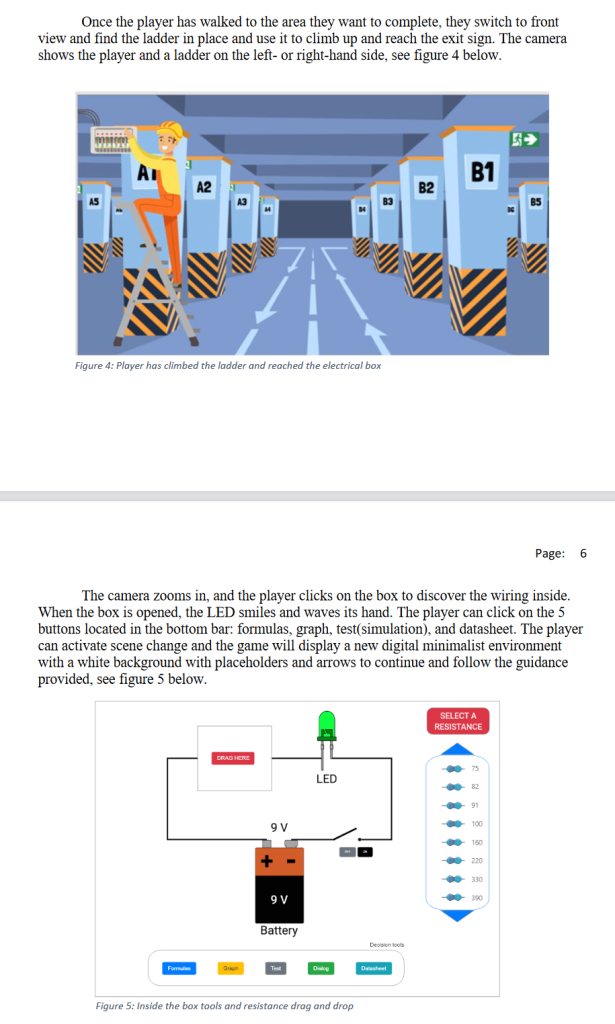
PDF General Design Document: Level4-Digital GDD & Construct v9
Puzzle game prototype with Collect and Place Feature demonstration:
https://kay6.itch.io/dragomir-ava-circuit-led

The power of abstraction (tentative title version 2), an ingenious abstraction (tentative title
version 1).
Proportionality is a mathematical concept used in everyday life and taught in middle
school. Britannica says, “A proportion is typically set up to solve a word problem in which one of
its four quantities is unknown.” Many games present students with this kind of problem and
guide them to follow a procedure and solve for an unknown quantity.
However, there is no game that I know of that focuses on abstract reasoning, guides
learners in connecting concepts, and support them in growing a deep understanding of what
proportionality is all about. That is my goal. It is about an abstract idea and guiding players to
make sense of it. A conceptual understanding of mathematical reasoning is critical for students to implement correct procedures and apply proportional reasoning effectively throughout their
school years and future professional life.
Math common core standards address the game’s learning topics from Grade 6 and beyond.
The game offers opportunities to develop a robust but straightforward mathematics model
connecting the underlying concepts of proportional relationships with algebraic expressions,
linear functions, and constant ratios of two–column data. When completed, the player can
recognize that all paths and representations lead to the same results but with a different point of view. This pedagogical approach promotes connecting ideas and open possibilities to work
toward higher levels of thinking while addressing the upper levels of Bloom taxonomy (Iowa
State University, n.d.) such as analyzing and evaluating options.
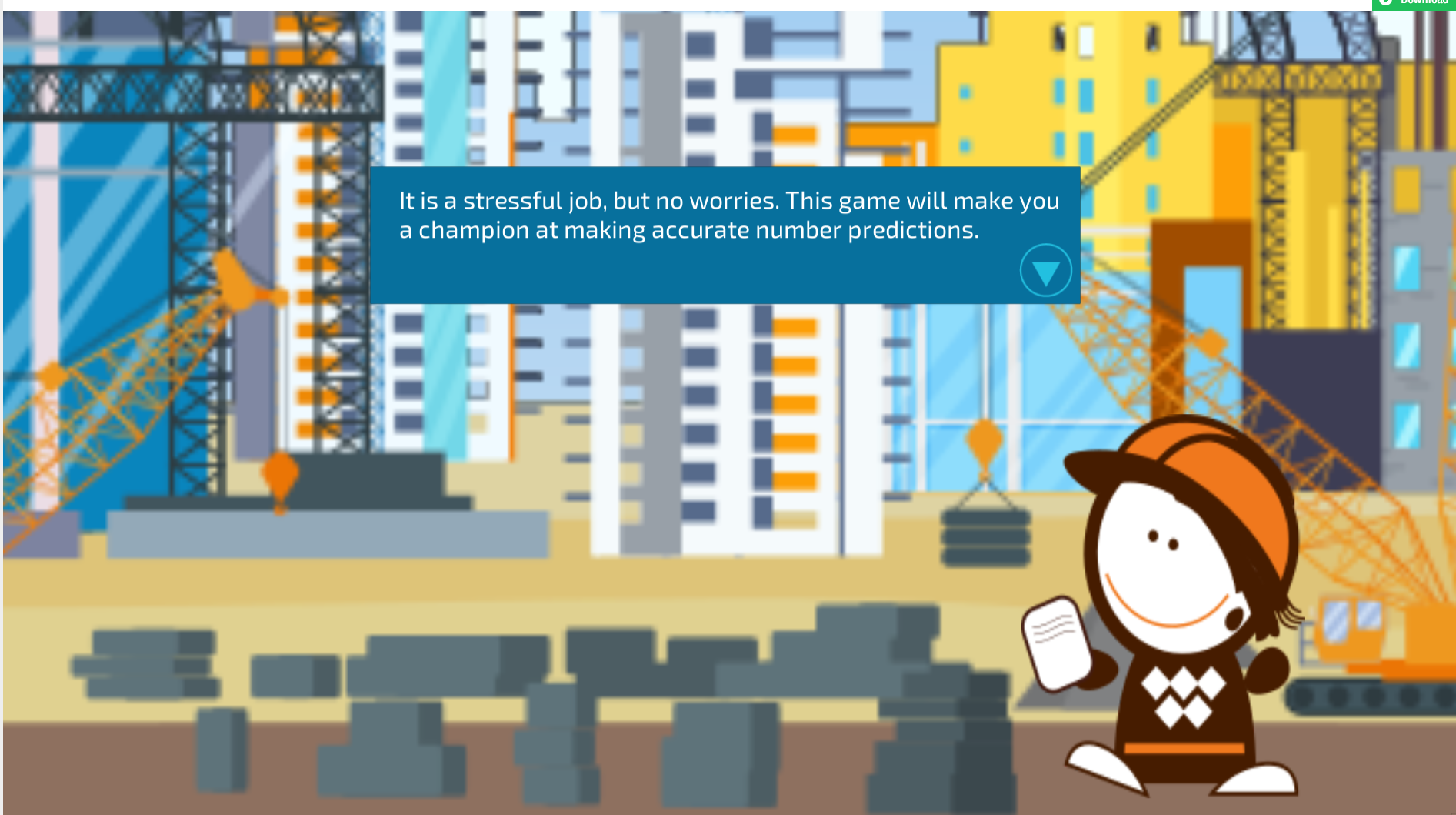
ITCHIO URL: https://kay6.itch.io/modern-math-enterprise-proportion
Game Design (Adobe software XD)
I used the flow features and deactivated links between clusters to make each one work as a standalone prototype for now as it is making it more manageable for this presentation and debugging. There are two clusters with the following URLs:
o Exposition prototype:
https://xd.adobe.com/view/1b3aa81d–91dd–407b–bbe0–c6bbb9b2301f–4e69/?fullscreen
o Algebra path prototype:
https://xd.adobe.com/view/2b290431–a2bc–4995–a842–b367cc1253d3–7e7a/?fullscreen
Prototype URL:
https://xd.adobe.com/view/cc34c3a2-e56e-410a-a9a4-08d7348f62f3-9967/?fullscreen
The branching map looks like this:
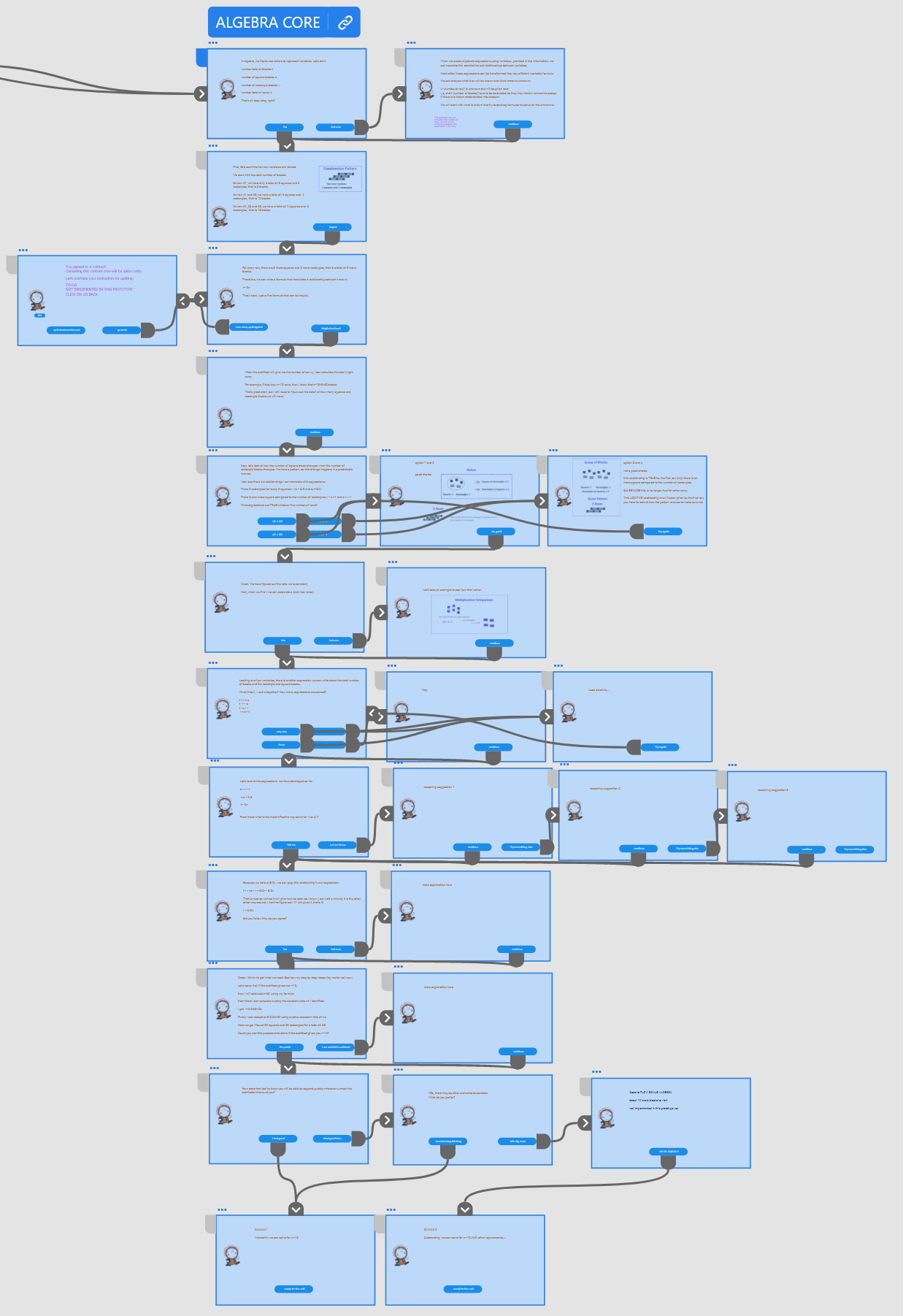
Learning objectives:
Math common core standards address the game’s learning topics from Grade 6 and beyond. Grade 8 students would benefit the most from this game as it will ask them to connect proportional relationships with algebraic expressions and linear functions, which are three big ideas examined in the mathematics common core standards but not always connected among each other:
Specifically, the main learning objective for the algebra path is::
“Represent proportional relationships by equations” CCSS.MATH.CONTENT.7.RP.A.2.C
Progress Status:
I completed a first version of the rising action of the algebra path as a branching scenario. The wording is still a work in progress… I hope it can be understandable at this stage.
What worked best; what didn’t?
- I kept the Freytag pyramid in mind to have a clear progression toward a climax, and then some falling actions as the play progressed to the “denouement.”
- When I started, I envisioned an entire game, but it was too much to handle, and I narrowed my design to just one part focusing on only one problem to solve. I could not use Math prerequisites and had to develop the entire reasoning, but I think that is an excellent benefit for the player and makes this part autonomous.
If you had to do this process over again, what would you change? If nothing, why not?
- I liked that we were encouraged to see this design as an iterative process, so I started to feel confident that whatever departure point I could use, I would end up featuring everything I’d like to see in my game. Also, I have reworked this game three times and can see it maturing and getting better. Even though I felt at the beginning that redoing was not the best use of my creativity and time, I realized I was getting more creative and had a better sense of what was required to complete this story. It is much more work than I had anticipated.
Describe your short story narrative game idea (you can copy this from what you included in the Discussion Board or change it up):
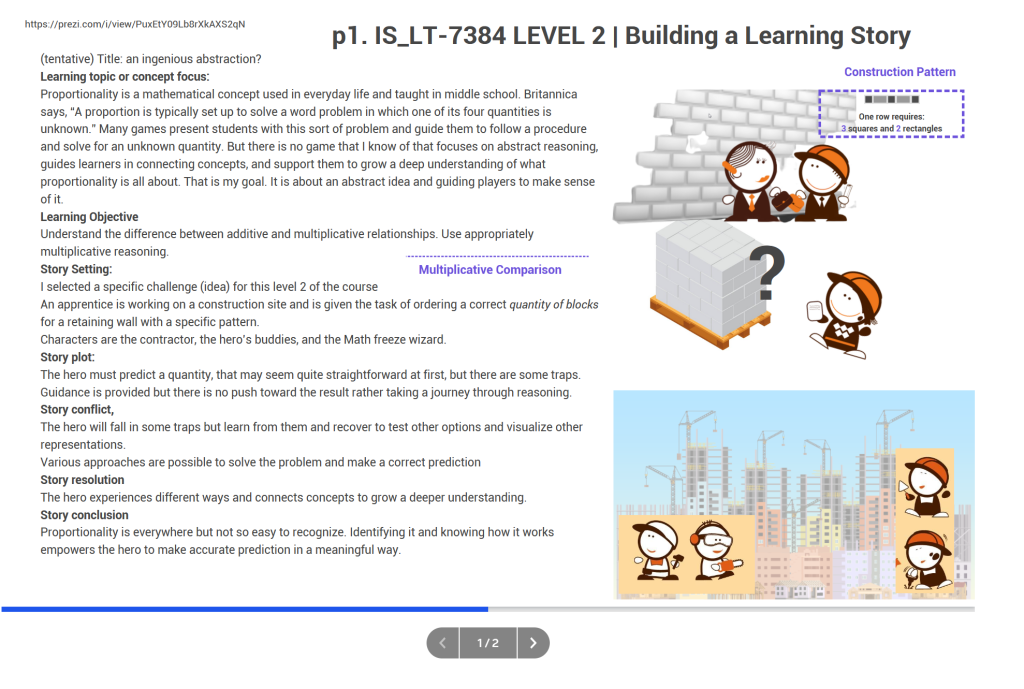
building learning story 1
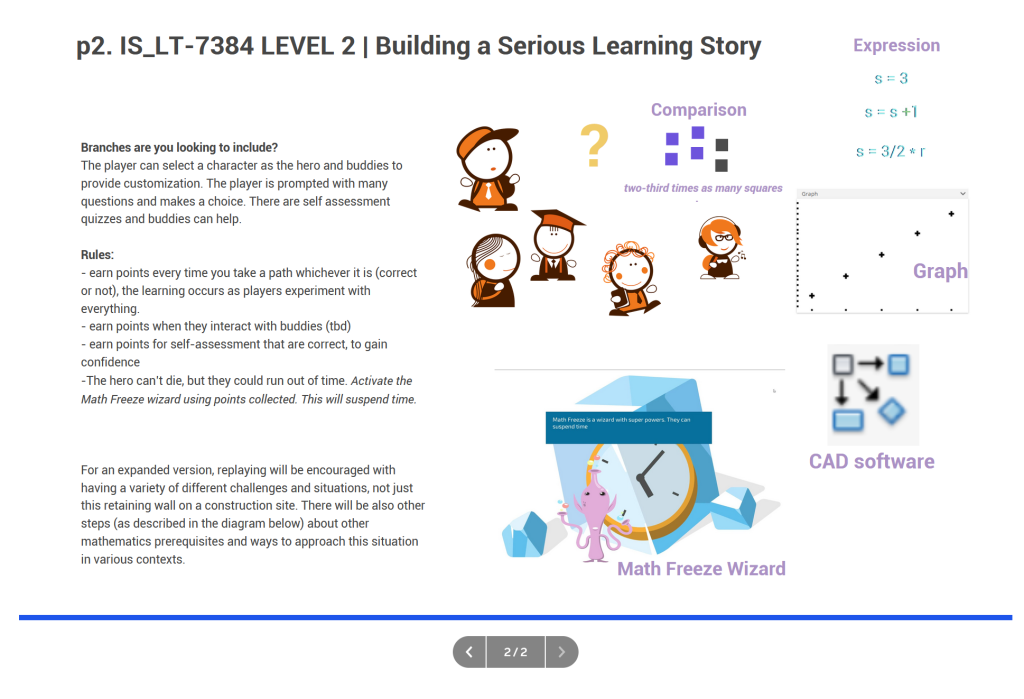
building learning story 2
What feedback did you receive from your peers? (summarize main points from the Discussion Board)
From James:
I tried to introduce the problem with a narrative that is as realistic as possible, although simplified, as suggested in our readings. I introduced one branching where the player can earn more points as they read the contractor’s mind. See below:
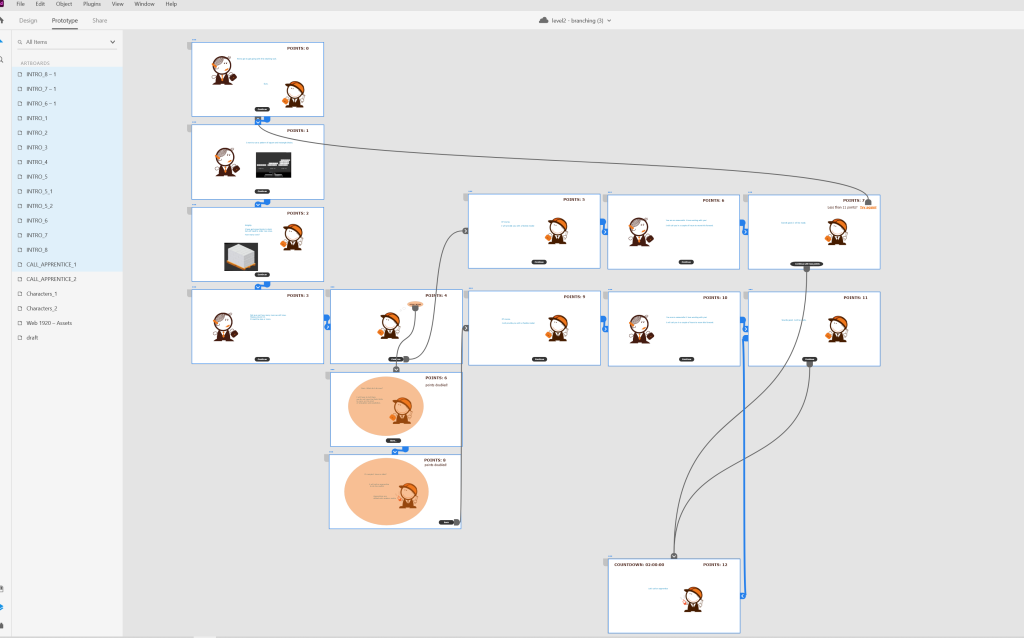
shot-xd-links-level2-branching
From Danielle:
I reworked my exposition (beginning), adding more complexity:
Time-sensitive action integrated with the story: construction must start the same day due to the risk of a late work penalty. All blocks must be ordered before 10:00 am.
This will add realistic project management issues in a construction setting where strict deadlines and team interdependencies can impact your work day unexpectedly. Then, the player only has 20 minutes to prepare to develop a math model and is ready to react quickly to the final data coming with the expected phone call. During the middle part of the story, there will be an option to buy more time or get time suspended. It will give more tile for learners to study toward the learning objectives.Link to the improved redesigned exposition flow:
https://xd.adobe.com/view/2ae34a9c-e393-48e1-a87a-61a8ec678f1d-7fb0/?fullscreen
Reflect on what you have been working on in this level as you work towards wrapping it up to submit:
I realized I had not completed an abstract Math narrative yet from beginning to the end as I was too busy branching and creating alternative paths. I designed the story and I took 8 crowded screens, I reworked it a few times already to lighten screens and create some choices and it is approaching the limit of 20 screens already.
Algebra solving flow:
XD design prototype for algebra
Screenshot of my current XD design. It is getting there!! It gives me a sense of how large my project is already. But it can not be smaller if I want to make it work.
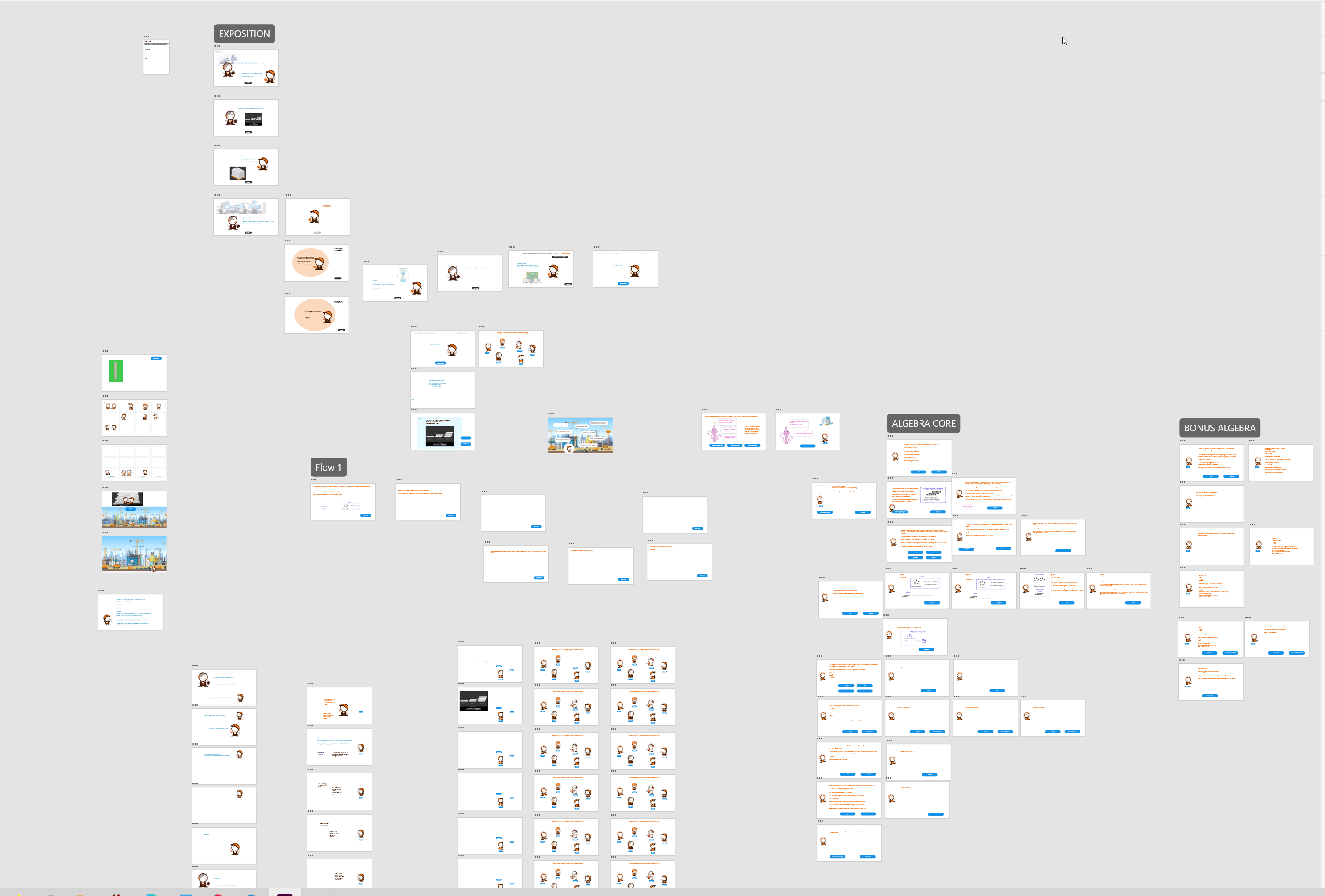
entire XD design as of now
Beginning, middle, and end description and FREYTAG Pyramid:
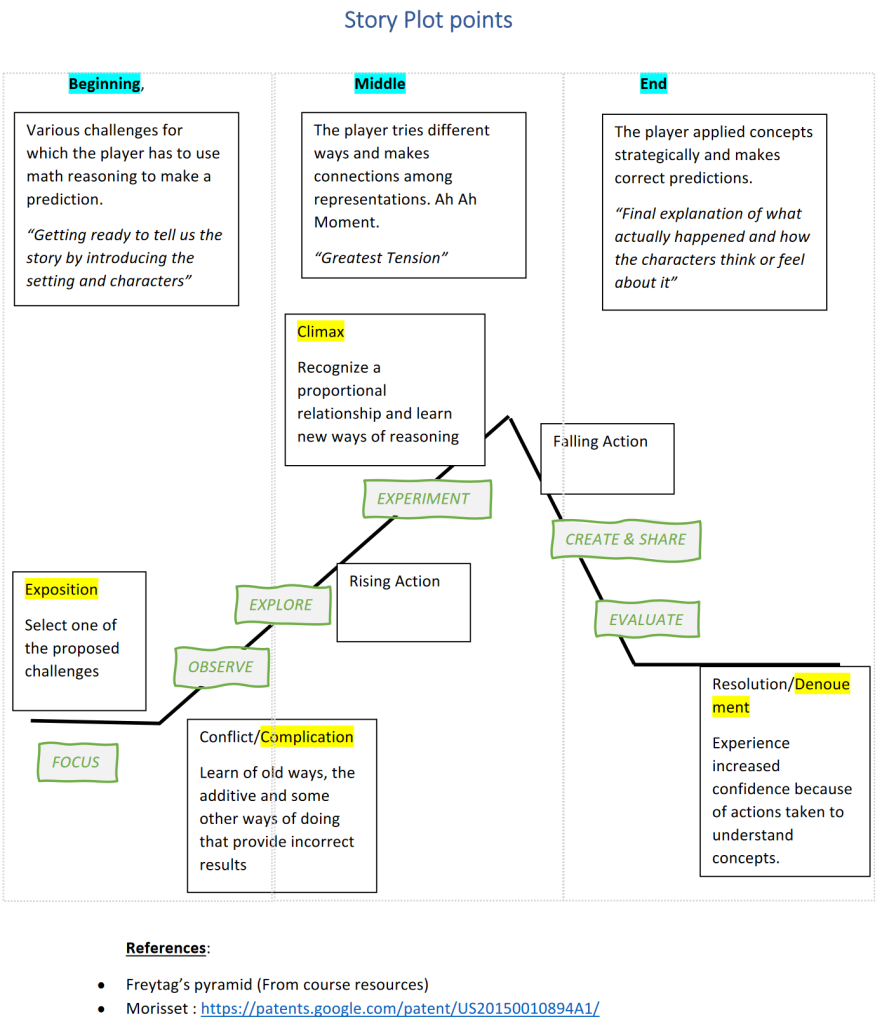
See the PDF below for a summary of my design work:
Provide your own example that distinguishes between novices and experts in a field.
Experts have an intuitive understanding compared to novices who follow step-by-step procedures. For example, expert golfers can sense when a putt they just hit will get into the hole where novices have to wait to see the result. Experts know that when they fail to assemble all that is required to excel in this shot, they can shortcut to the flawed pieces. In contrast, novices are frustrated and have limited insight into their mistakes as they can not hold all components of a great putt into memory.
In your mentor game, compare how failure is used to motivate players to keep playing compared to the Mario example given in the Mario Effect video.
In my mentor game (Ludwig), failure is not managed positively to motivate and guide players to learn from their mistakes. When you fail, you are stuck. I did not see any scaffolding allowing the player that failed steps could learn something and redo it. It is a design mistake when we know that many physicists have made discoveries while researching in a trial and error mode. Mario allows for this: you may fall into a pit, but you can try again, having learned something.
I selected Ludwig game because I’d like to see how they solved the difficult equation:
learning objectives = gaming objectives
( This equation was presented as part of this Ted Talk about Ludwig: TedxVienna – Joerg Hofstaetter – Video Games A Powerful Learning Tool)
Since I decided to shift my instructional material’s design and development to serious games, this is a design aspect that has puzzled me. It seems like compelling stories and graphics do not guarantee for an effective learning experience. Most education games struggle to capture a large audience (I am talking about millions of users) and I am all ears and eyes opened to see what others have done to reach new levels of interest.
Ludwig is a game that has received the prestigious Future Zone serious game Award and was designed with physics instructors, tested in classroom, and aligned with the physics curriculum, I can’t wait to see how they creates rules of play and other game elements.
Also, The game Ludwig was designed and made in Europe and I am interested to see how it differs from US-designed games.
Analysis Paper Excerpt:
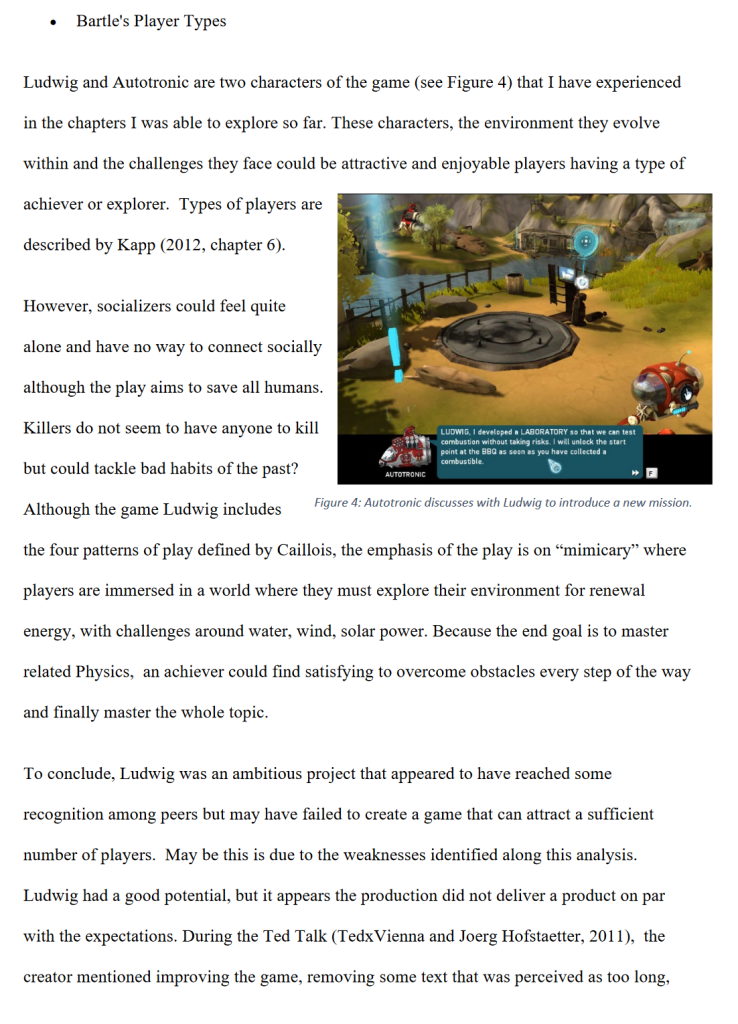
My Analysis Paper can be downloaded as a PDF file below: